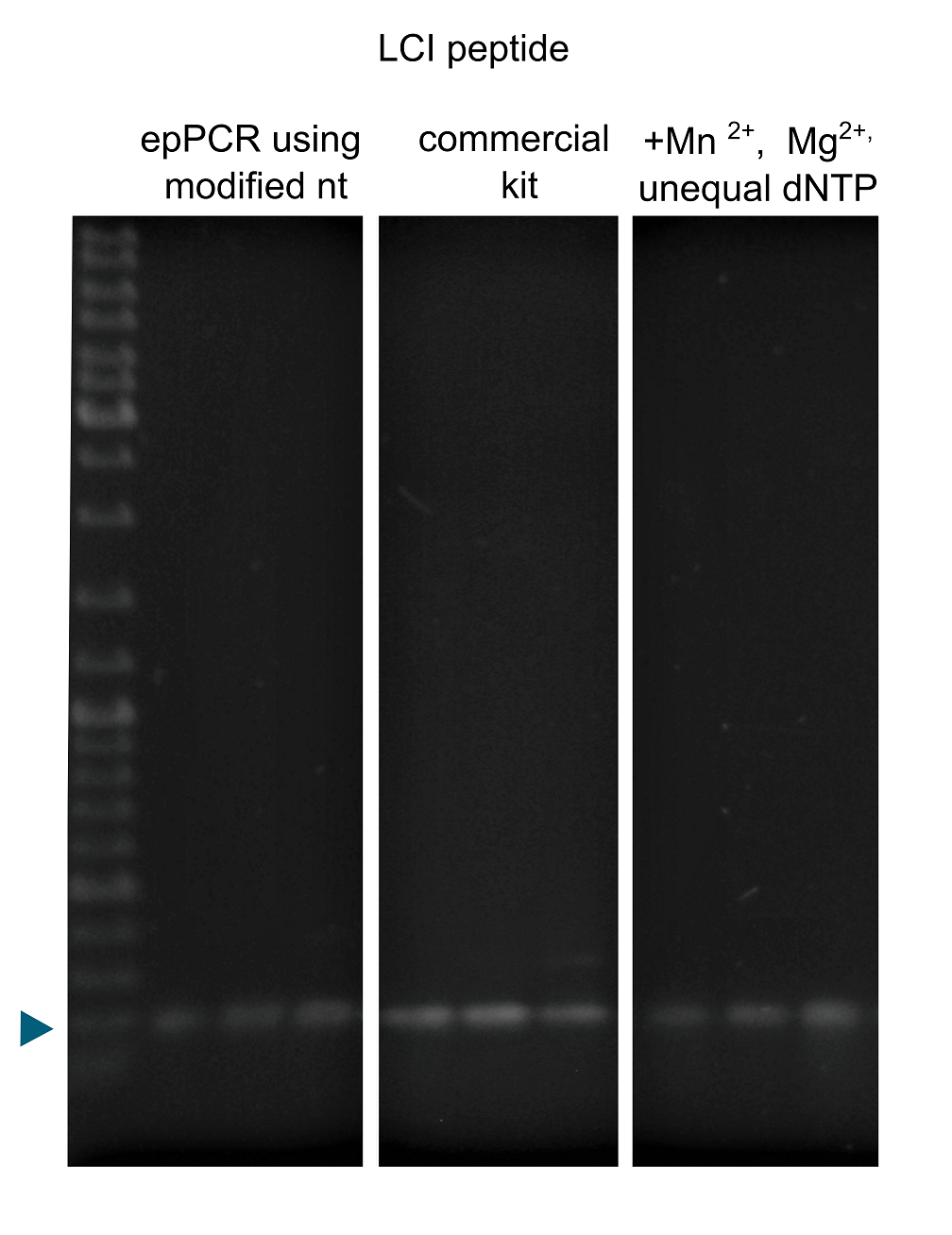Part:BBa_K4380019
EstA cell surface display system with mutated LCI peptide
Introduction
Vilnius-Lithuania Igem 2022 project NanoFind was working to create an easily accessible nanoplastic detection tool, using peptides, whose interaction with nanoplastic particles would lead to an easily interpretable response. The system itself focused on smaller protein molecules, peptides, which are modified to acquire the ability to connect to the surface of synthetic polymers – plastics. The detection system works when peptides and nanoplastic particles combine and form a sandwich complex - one nanoplastic particle is surrounded by two peptides, attached to their respective protein. The sandwich complex consisted of two main parts – one is a peptide bound to a fluorescent protein, and the other peptide is immobilized on a cellulose membrane by a cellulose binding domain.
A bacterial cell surface display system, based on the protein EstA was used as a novel way to expose the same peptides onto the bacterial membrane, allowing to amplify the signal of nanoplastic presence in a solution and finding novel peptides by using a peptide evolution protocol (PePevo). The team has generated several experimental characterizations, proving that the domain is successfully exposed on a bacterial surface, and created several new composite parts using this system.
Profile
Name: Bacterial cell surface display system, based on EstA protein from Pseudomonas aeruginosa
Origin: Synthetic, built from parts: BBa_K4380001 ->
BBa_K4380003 ->BBa_K4380006 -> BBa_K4380007 -> BBa_K4380005 -> BBa_K4380002 -> BBa_K2694001
Properties : Cell surface display protein system, which can be used as an immobilization unit on bacterial cellular membrane of LCI peptide or be applied for Directed Evolution purposes
Safety: Biosafety level 1 laboratory
Usage
Bacterial display systems are routinely used for the improvement of antibodies, peptides, or enzymes. One frequently used bacterial cell surface display system is based on the EstA protein. Although there are different approaches on using this protein for cell surface display exposure, one of the most frequent uses involves a mutation at active residue S38A. This mutation eliminates enzymes esterase activity but the enzyme still able to be expressed on bacterial surfaces, therefore, can be used as an anchoring motif. The catalytically inactivated extracellular domain and the passenger domain are subsequently translocated to the cell surface [1][2] and E. coli cells can heterologously present approximately 36,000 copies of EstA on the cell surface[1].
This specific part can be used as a novel way to mutate plastic-binding LCI peptide in order to improve plastic binding peptides specifity.
Directed evolution
The part was used for directed evolution approaches. Two different error-prone PCR strategies were chosen in order to find peptides with higher specificity (Table 1, Figure 2).
- epPCR using modified oligonucleotides 8-Oxo-dGTP and dPTP.
- epPCR utilizing low fidelity of Taq polymerase (with commercial kit and manual substrate selection).
Table 1. epPCR results for LCI peptide.
| Method | Mutations |
|---|---|
| epPCR using modified oligonucleotides | 45 bp/kb |
| PickMutant™ Error-Prone PCR Kit (Cat. No. MT040) | 27 bp/kb |
| epPCR using low fidelity of recombinant Taq polymerase | 42 bp/kb |
- 10COMPATIBLE WITH RFC[10]
- 12COMPATIBLE WITH RFC[12]
- 21INCOMPATIBLE WITH RFC[21]Illegal BglII site found at 536
Illegal BglII site found at 683
Illegal BamHI site found at 297 - 23COMPATIBLE WITH RFC[23]
- 25INCOMPATIBLE WITH RFC[25]Illegal NgoMIV site found at 466
Illegal NgoMIV site found at 922
Illegal NgoMIV site found at 1060
Illegal NgoMIV site found at 1600
Illegal NgoMIV site found at 1969 - 1000COMPATIBLE WITH RFC[1000]
References
[1] Becker, S., Theile, S., Heppeler, N., Michalczyk, A., Wentzel, A., Wilhelm, S., Jaeger, K.-E., & Kolmar, H. (2005). A generic system for the Escherichia coli cell-surface display of lipolytic enzymes. FEBS Letters, 579(5), 1177–1182. https://doi.org/10.1016/j.febslet.2004.12.087
[2] Salema, V., & Fernández, L. Á. (2017). Escherichia coli surface display for the selection of nanobodies. Microbial Biotechnology, 10(6), 1468–1484. https://doi.org/10.1111/1751-7915.12819
| None |


